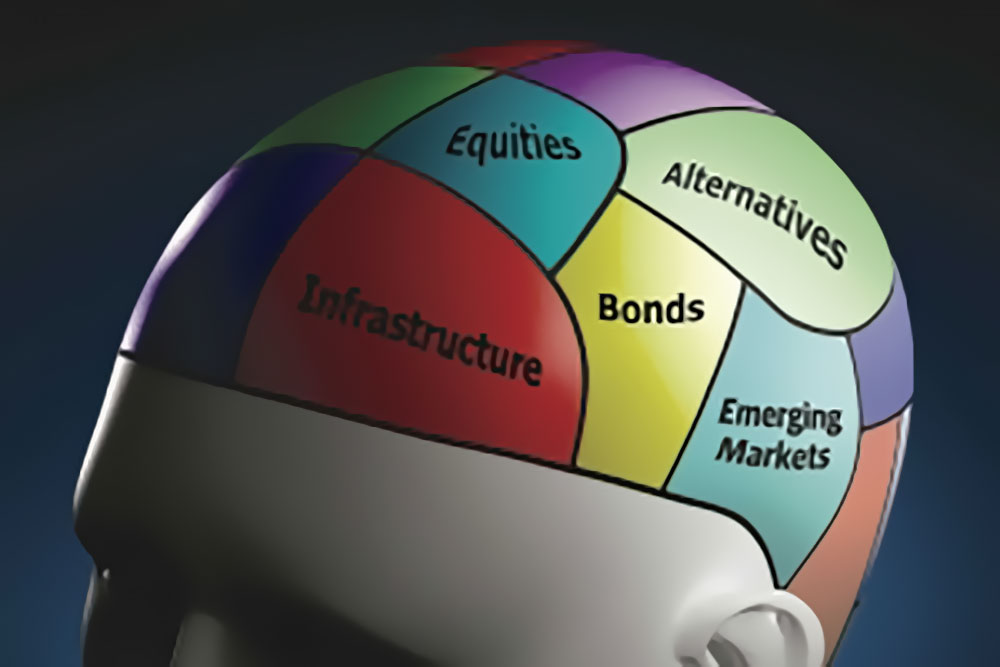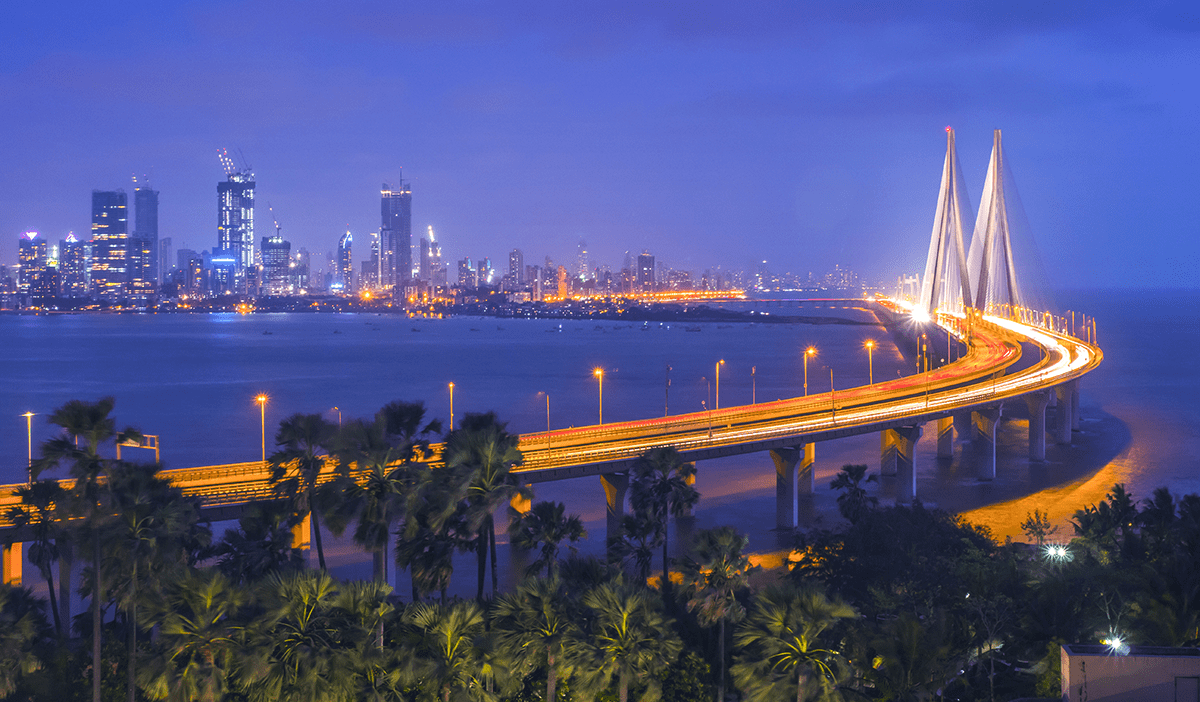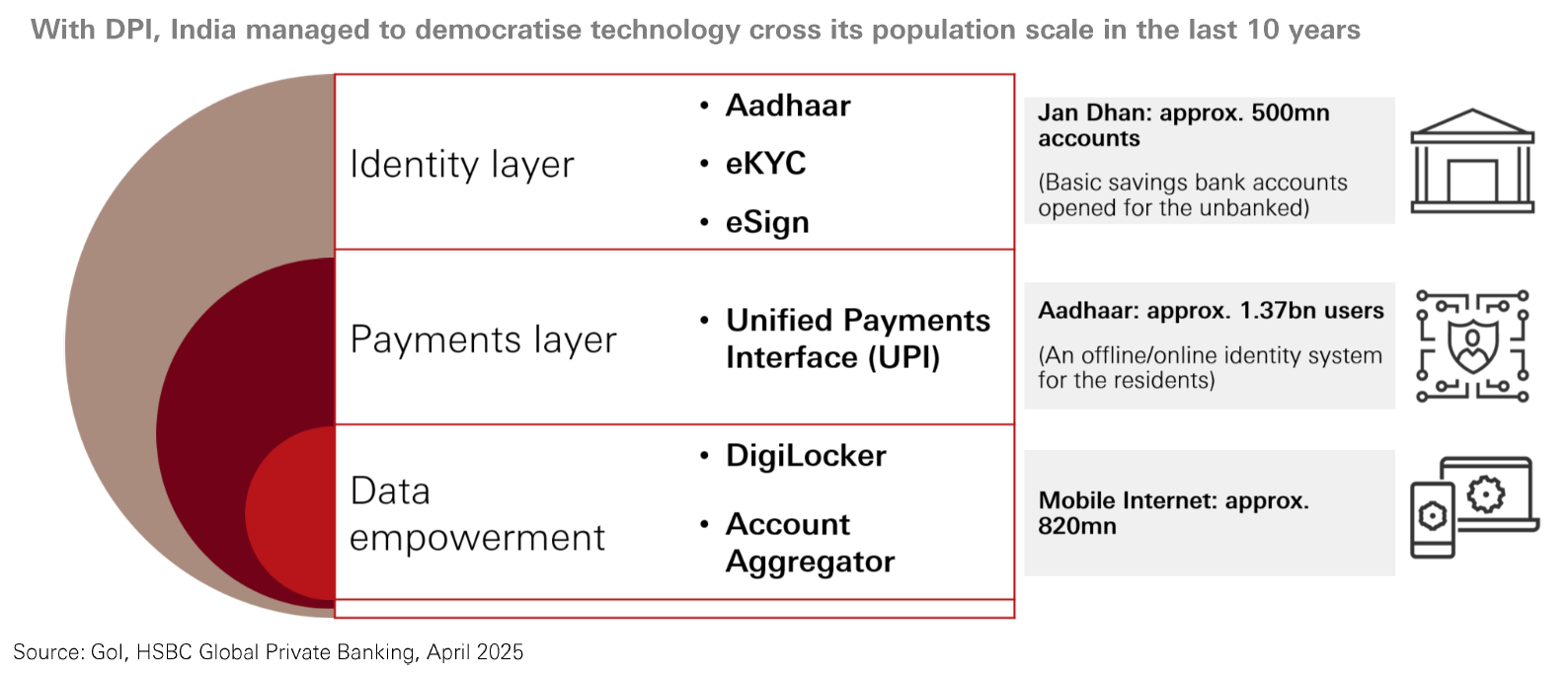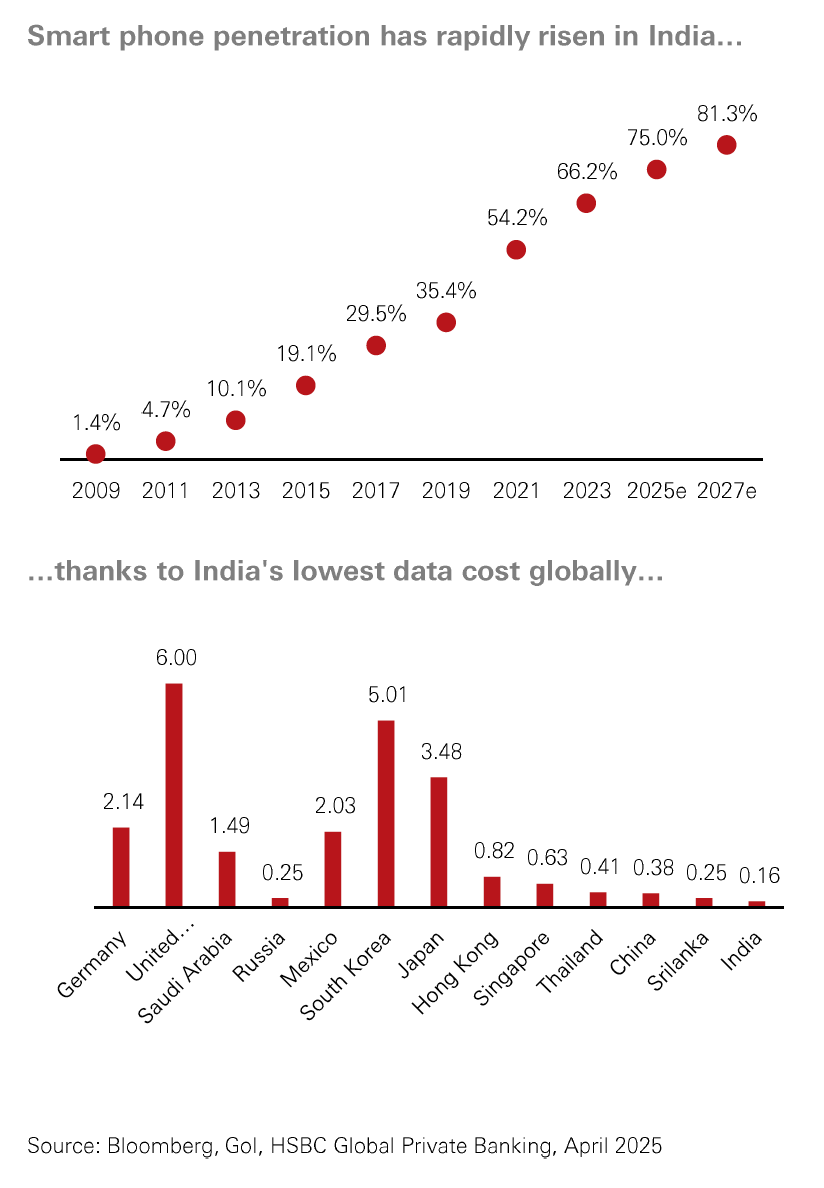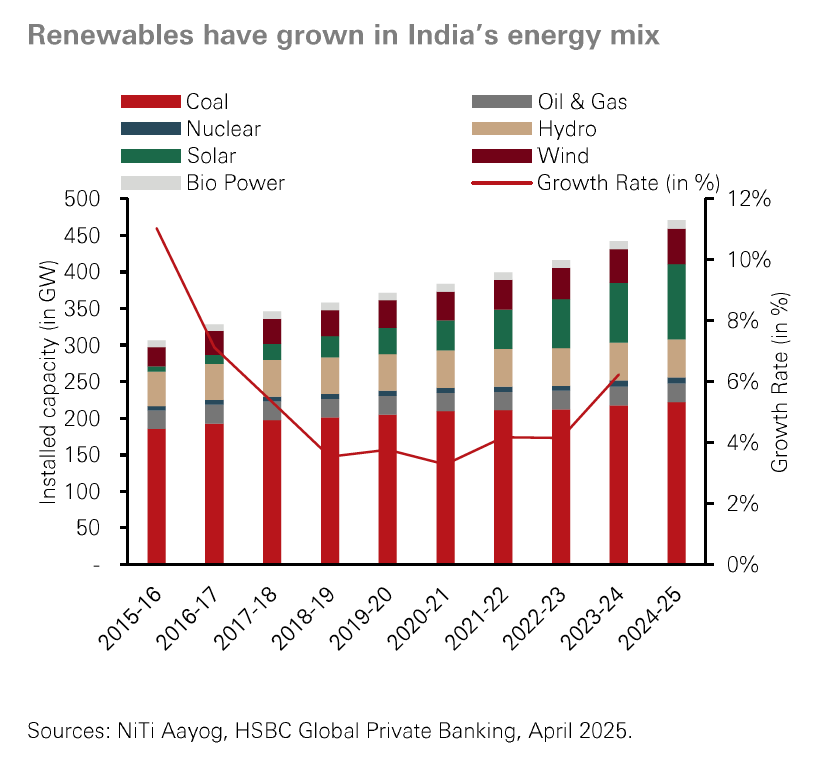Can the World's Third Most Digitalized Nation Leap from DPI Dominance to AI Leadership?
India stands at an unprecedented inflection point. Having transformed from a fragmented economy into the world's third most digitalized nation within a decade¹, the subcontinent now confronts its most consequential technological crossroads since independence. The question reverberating through global markets isn't whether India can maintain its digital momentum—it's whether the nation can execute what HSBC's Neha Sahni calls "another 'tech-tonic' shift in its journey of innovation - this time from DPI to AI."²
The Unprecedented Foundation: India's Digital Metamorphosis
The numbers surrounding India's digital transformation defy conventional emerging market trajectories. The country's Digital Public Infrastructure (DPI), dubbed the "India Stack," has democratized technology at a scale previously thought impossible. Jan Dhan accounts reached approximately 500 million, providing basic banking for the previously unbanked, while Aadhaar captured approximately 1.37 billion users in what represents the world's largest digital identity system³. Mobile Smartphone penetration surged from a mere 1.4% in 2009 to an projected 81.3% by 2025⁴.
This digital revolution occurred alongside India achieving the world's lowest data costs globally, creating what Sahni describes as a virtuous cycle where "India's digital economy is growing at twice the pace of the overall economy and projected to become one-fifth of the country's economy by 2029"⁵. The magnitude of this transformation positions India uniquely for the next technological leap—but only if it can navigate the complexities of the global AI arms race.
The DeepSeek Disruption: Why Brains Beat Brawn in AI
The recent emergence of DeepSeek as a formidable AI challenger has fundamentally altered the competitive landscape, providing India with an unexpected strategic opening. As Sahni observes, "Recent rise of cheaper & efficient models like DeepSeek has shown that in this AI race, brains will conquer the brawn." This development represents more than a technical breakthrough—it's a paradigm shift that plays directly to India's strengths in frugal innovation and engineering talent optimization.
The implications are staggering for global AI competition. Where previous assumptions suggested that only resource-rich nations could compete in large language models, DeepSeek's success demonstrates that "'distilling' the already existing opensource AI models to develop an indigenous Indian AI model & localised applications is the way to go"⁶. This strategic pivot could allow India to bypass the massive capital requirements that have historically favored US and Chinese AI development.
The Critical Gaps: India's AI Infrastructure Reality Check
Despite its digital achievements, India's AI readiness reveals concerning vulnerabilities. Among G32 countries, India ranks only 11th in AI research and 16th in AI infrastructure⁷. The government's National AI Mission (NAIM), launched in 2024, has made progress by securing over 18,000 GPUs through public-private partnerships⁸, but significant structural challenges persist.
Sahni identifies three critical deficiencies that could determine India's AI trajectory:
- Data Sovereignty Crisis: Despite generating massive digital transaction volumes as the world's third-largest digital economy, "India specific data remains siloed, unstructured, and untapped"⁹. This represents a fundamental paradox—a data-rich nation that cannot effectively leverage its own information assets for AI development.
- Talent Quality Paradox: While India produces one of the world's largest STEM graduate pools, "fixing its talent gap in AI, especially when it comes to the quality and job readiness of Indian engineering graduates is critical"10. The persistent "brain-drain" issue continues as top talent migrates to superior AI ecosystems in the West.
- R&D Infrastructure Deficit: India requires "a research ecosystem that fosters AI R&D"11, necessitating enhanced industry-academia partnerships and commercialization incentives that currently lag global standards.
The Energy Security Imperative: Powering AI Ambitions
India's strategic approach to AI infrastructure extends beyond computational resources to fundamental energy security. The nation has dramatically expanded renewable energy production "from 26% to 46% of India's energy mix" over the past decade12. This energy transformation directly addresses AI's massive power requirements, with India targeting 100GW of nuclear capacity by 2047 through Small Modular Nuclear Reactor development13.
The February 2025 budget allocated Rs 20,000 crores (~$2.4bn) for SMR research and development, representing a comprehensive approach to AI-ready infrastructure that most emerging markets cannot match14. This energy security focus demonstrates India's understanding that AI leadership requires sustained, reliable power generation at unprecedented scales.
The Outsourcing Model Disruption: India's IT Sector Reckoning
India's $263 billion IT services sector faces its most significant disruption since the Y2K boom15. Sahni delivers a stark assessment: "We think the Indian IT sector's 'outsourcing model' is ripe for disruption in the new AI world"16. The traditional input-based revenue model that enabled linear scaling of IT services cannot survive in an outcome-oriented AI landscape.
The transformation requirement is fundamental: "India's IT sector needs to breakout of its existing revenue model and reinvent itself from currently being a provider of outsourced IT services to becoming one of the world's leading AI R&D hubs"17. However, "India's vibrant start-up ecosystem is ahead of the curve and is doubling down on AI applications focused ventures", where "AI is no longer a USP, it's becoming fundamental to all things tech"18.
Investment Opportunities: The Trillion-Dollar AI Catalyst
Sahni identifies three sectors where India's AI transformation creates compelling investment opportunities:
- Digital Consumption Revolution: Quick-commerce platforms have achieved operational excellence enabling under 10 minutes delivery of diverse products, capitalizing on India's shift "from price sensitivity to speed and convenience"19. The total addressable market continues expanding as smartphone and internet penetration reaches Tier 2 and Tier 3 cities.
- Financial Services Democratization: Technology has transformed India's financial landscape by increasing "convenience, transparency and accessibility of financial markets, while lowering costs"20. The critical shift shows "Indian savers are fast becoming retail investors" as "financialisation of savings" accelerates alongside credit accessibility through formal banking channels21.
- Healthcare AI Integration: Rising incomes and living standards benefit healthcare sectors where "AI powered digital pathology and medical imaging solutions are improving diagnostics"22. The healthcare AI market is "forecasted to grow by 40.6% in 2025 and reach $1.6bn"23, with particular transformation in rural healthcare accessibility.
The Strategic Convergence: Frugal Innovation Meets AI Scale
India's potential AI success hinges on leveraging what Sahni calls its "secret sauce of 'Frugal Innovation'"24. This approach, combined with the DPI foundation, positions India to develop indigenous AI applications addressing India-specific challenges—from multilingual natural language processing to rural agricultural optimization.
The economic implications are transformational. "AI is estimated to contribute $1trn to India's GDP by 2027 and create over 30 million jobs"25. If realized, this would represent one of the fastest large-scale economic transformations in modern history, potentially reshaping Asia's technological hierarchy.
The Global Stakes: Asia's AI Applications Hub
The broader implications extend far beyond India's borders. Success in this "tech-tonic shift from DPI to AI" would establish India as "one of Asia's leading AI applications' hubs"26, fundamentally altering regional technological dependencies and global AI development patterns.
Sahni's conclusion captures the historic nature of this moment: "The global AI race is on and may end up deciding which nation leads the world order"27. For India, the path forward requires synchronizing talent development, data repository creation, and R&D infrastructure while maintaining the frugal innovation principles that enabled its initial digital transformation.
The window for this transformation remains open, but narrowing rapidly. As Sahni notes, "AI is no longer a one-horse race"28—but success demands immediate, coordinated action across India's technology ecosystem. The nation that successfully democratized digital payments and identity verification now faces its ultimate test: can it democratize artificial intelligence itself?
***
Footnotes:
¹ Sahni, Neha. "India’s Tech-tonic Shift: From DPI to AI." HSBC Global Private Banking, April 2025, p. 2.
² Ibid., p. 1.
³ Ibid., p. 2.
⁴ Ibid., p. 3.
⁵ Ibid., p. 3.
⁶ Ibid., p. 1.
⁷ Ibid., p. 4.
⁸ Ibid., p. 4.
⁹ Ibid., p. 5.
10 Ibid., p. 5.
¹¹ Ibid., p. 6.
¹² Ibid., p. 6.
¹³ Ibid., p. 6.
14 Ibid., p. 6.
15 Ibid., p. 7.
16 Ibid., p. 7.
17 Ibid., p. 7.
18 Ibid., p. 7.
19 Ibid., p. 8.
20 Ibid., p. 8.
21 Ibid., p. 8.
22 Ibid., p. 9.
23 Ibid., p. 9.
24 Ibid., p. 5.
25 Ibid., p. 1.
26 Ibid., p. 10.
27 Ibid., p. 10.
28 Ibid., p. 10.
Copyright © AdvisorAnalyst



